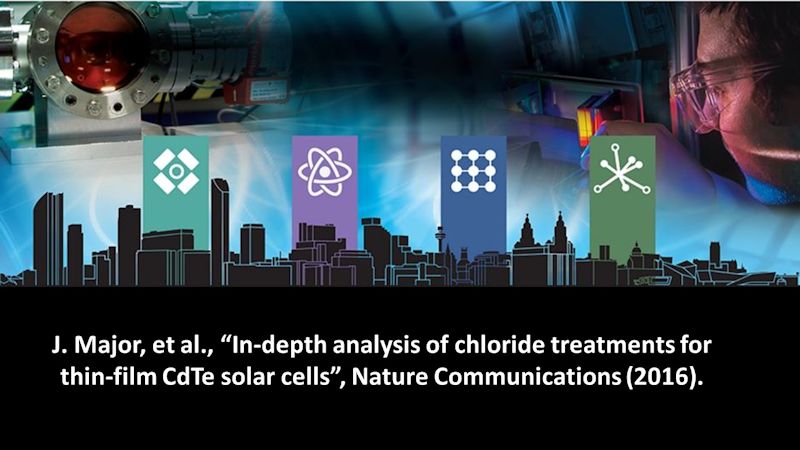Promising option for improving solar cell technology published in Nature Communications

Cadmium telluride (CdTe) thin film solar cells are now an industrially established alternative to the standard silicon based photovoltaic solar modules. This technology offers equivalent performance, reduced production costs and also less carbon intensive fabrication. Despite its large scale implementation, a number of more fundamental materials questions remain unanswered though.
Primary amongst these is the role of the ubiquitous chloride activation step. By treating cadmium telluride solar cells with a chlorine rich compound such as cadmium chloride, or the more recently established magnesium chloride1, a solar cell of <1% efficiency is converted to one of >10% efficiency. This process is undeniably effective, however the mechanism by which it functions is not well understood, despite widespread study.
In an article just published in Nature Communications a different approach to previous work is taken. Rather than focus solely on analysis of a single high efficiency chloride treatment, as is typical, here a variety of chloride treatments, and thus range of solar cell of performance levels, are compared. Effective chloride treatments such as magnesium and cadmium chloride are compared with ineffective treatments such as sodium chloride and the resulting solar cells are characterised utilising an array of chemical, optical and electrical measurement techniques. This allows the myriad of effects of the chloride treatment to be picked apart, revealing direct influence on the behaviour of thin-film grain boundaries, the lifetime of excited carriers within the semiconductor and ultimately the voltage the solar cell generates.
The work develops new understandings of how the chloride treatment benefits cadmium telluride solar cells and could lead to improvements in the treatment process.
Further information: J. Major, et al., “In-depth analysis of chloride treatments for thin-film CdTe solar cells”, Nature Communications (2016).
